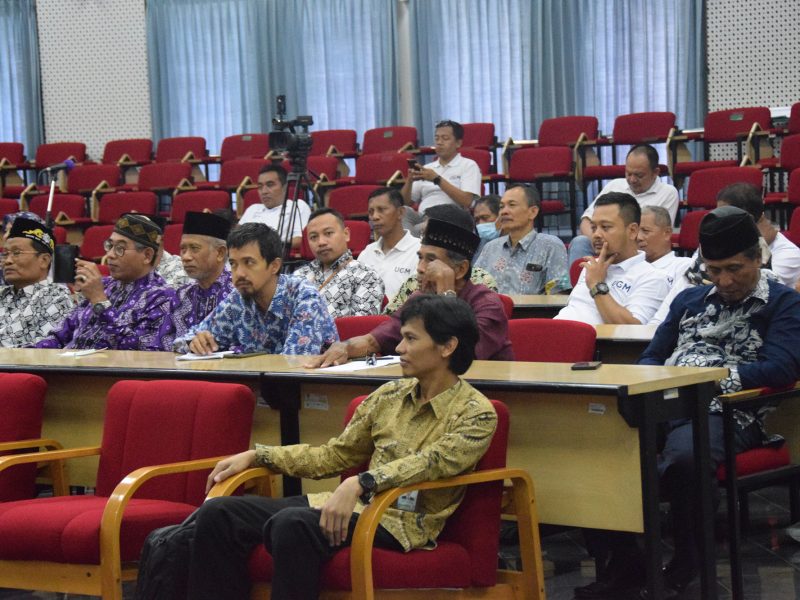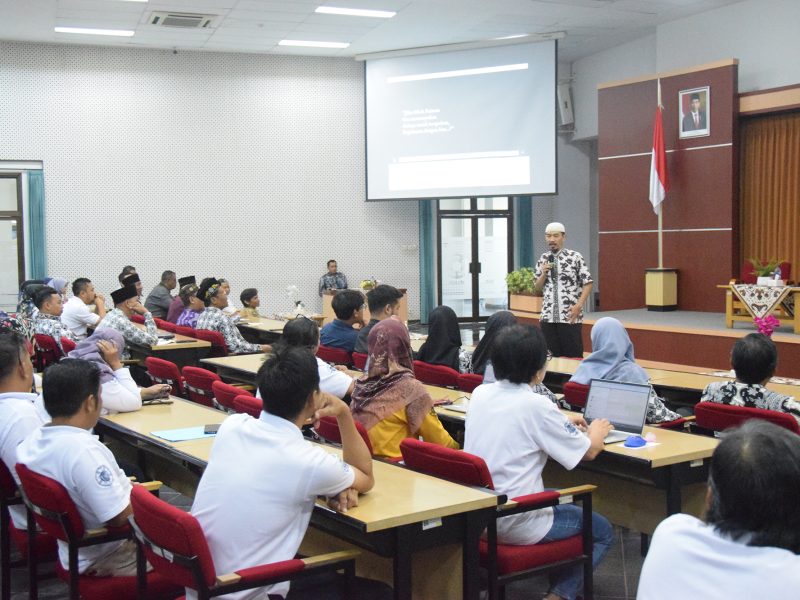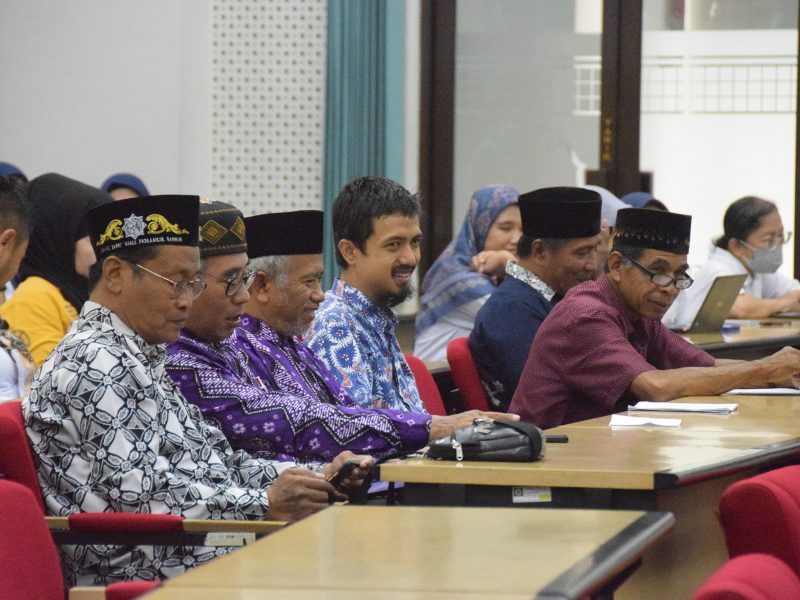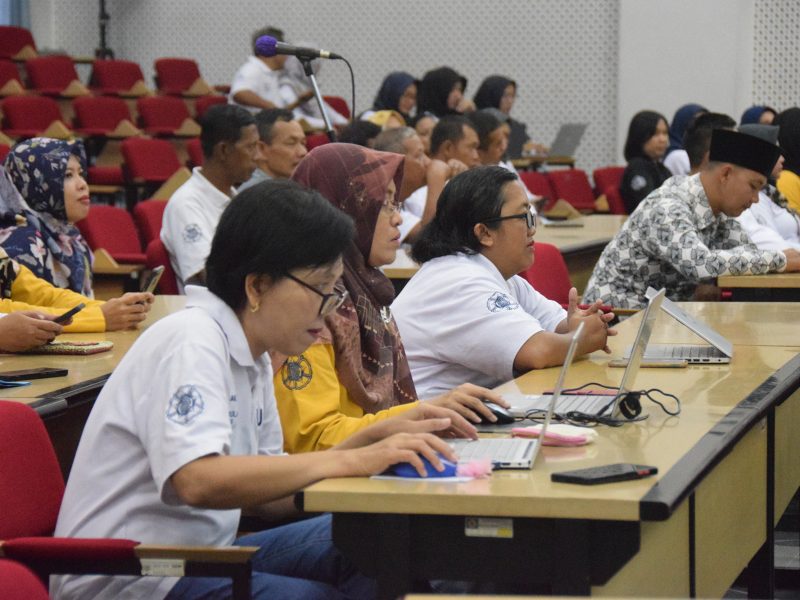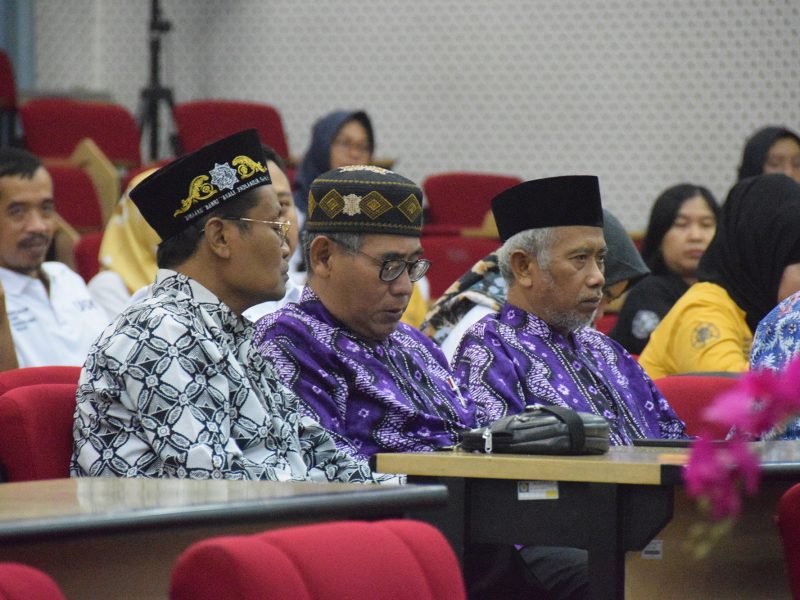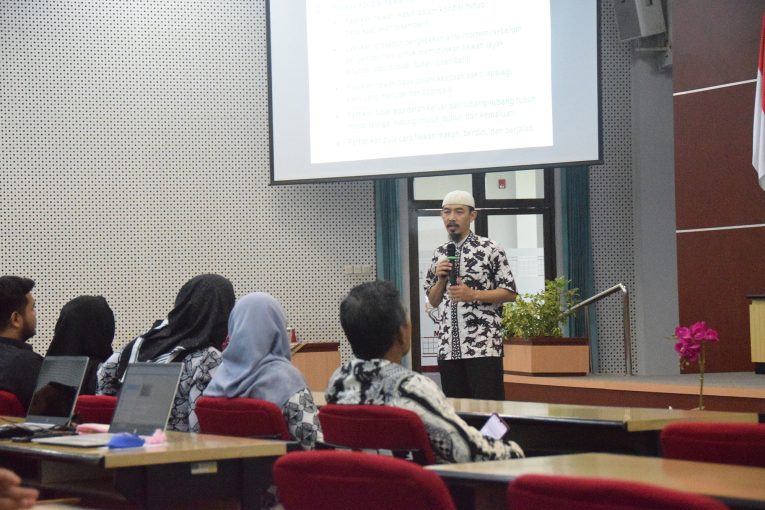
The seminar held on June 10th, “Treat the sacrificial animal well, because it is a noble animal that will ‘escort’ the owner of the Qur’an to heaven, so the preparation of slaughter facilities and infrastructure needs to be done as best as possible. Sharpen the knife as sharp as possible and perform knife sharpness checking procedures. It is prohibited to use dull knives, let alone serrated knives. Slaughter knives are not allowed to be used together with slaughtering impure animals, and prepare knives according to their designated use (poultry, goats/sheep, cows/buffaloes, horses, camels, etc.).”
During the process of slaughtering the sacrificial animal, it is forbidden to hit, kick, or injure the sacrificial animal. After tying the four legs of the cow, there is no need to place wood or bamboo between the four legs of the cow, and it is forbidden to pull the tail of the slaughtered cow.
This was conveyed by Ir. H. Nanung Danar Dono, S.Pt., MP., PhD., IPM., ASEAN Eng, a lecturer in the Islamic Economics study program at SPs from the Faculty of Animal Husbandry, Deputy Chairman of the UGM Halal Center, who acted as a speaker at the Talk Show event: Hygienic Procedures for Animal Slaughter and Handling of Qurban Meat, organized by the UGM Graduate School in the Auditorium on the 5th floor of the SPs UGM Building, on Friday, June 7th, 2024.
During the slaughtering process, perform the slaughtering process correctly and according to Sharia. Slaughter by severing the three channels in the front neck, namely the respiratory tract (trachea), the digestive tract (esophagus), and the blood vessels (carotid artery and jugular vein). It is forbidden to slaughter until the neck or spinal cord is severed, also forbidden to cut the legs and tail of the animal, and forbidden to skin the animal until it is ensured that the animal has truly died after slaughter.
Mistakes that sometimes occur include insufficient knowledge preparation, wrong positioning of the hooves, incorrect costumes, and failure to hold the animal firmly by its four legs during slaughter.
After slaughter, it is necessary to examine the condition of the internal organs, and if any abnormalities are found in the internal organs, the committee should immediately contact a livestock health expert. Do not cut meat while smoking, avoid coughing and sneezing directly towards the meat, and do not wash the offal in the river.
Operating crews should wear plastic gloves when handling qurban meat, leave meat on the bone and do not place meat on the ground surface. Separate the management of meat and offal. When distributing meat, use appropriate and safe containers.
This activity is also in line with the implementation of SDGs Number 3 regarding health.
Author: Arni Wistratun
Editor:

